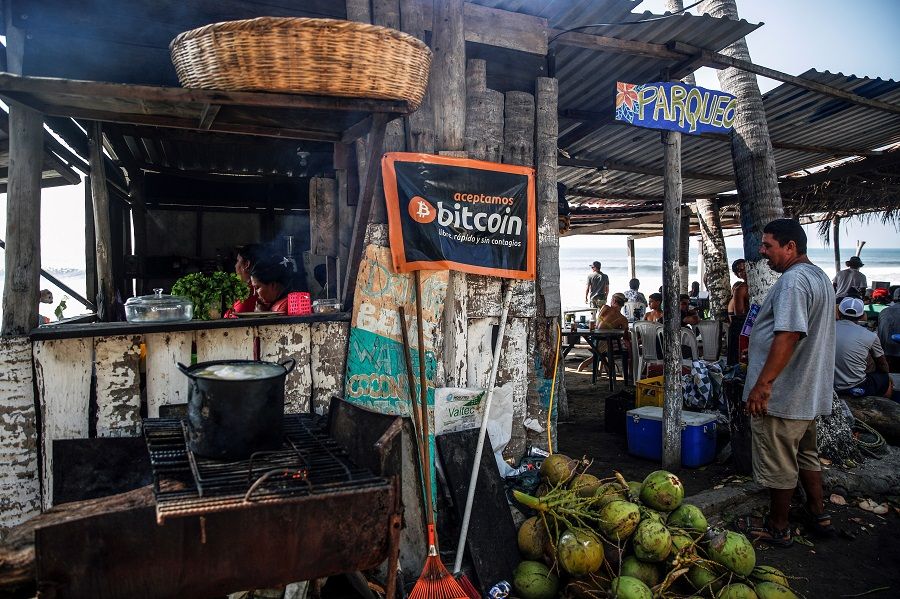How China took the lead in the digital currency race

Over the past decade, the topic of digital currencies - including cryptocurrency and central bank digital currency (CBDC) - has been a key one in the finance and technology industries. In the field of cryptocurrency, the price of Bitcoin (BTC) skyrocketed from over US$5,000 in mid-March 2020 to over US$60,000 in mid-March this year, recording an increase of over ten times within a year and generating huge interest in the cryptocurrency market. In the field of CBDC, the Bank for International Settlements (BIS) reported in January 2020 that "80% of central banks are engaging in some sort of work [in CBDCs], with half looking at both wholesale and general purpose CBDCs".
China is one of the most important economies in the world. Since April 2020, the People's Bank of China (PBOC) has launched several concurrent pilot tests of China's central bank digital currency known as digital currency electronic payment (DCEP) in various important economic cities, and progress has been rapid. As the CBDC is a key financial system innovation in the last few decades and would have a huge impact on the government, companies and the man on the street, this article analyses the history and current state of play of digital currencies, particularly the PBOC's DCEP.
The jargon
When watching or reading news about digital currencies, the following terms are frequently used: virtual currency, digital currency, cryptocurrency, e-money, and so on. How are these terms related to or different from one another?
First, virtual currency. While virtual currency is often used interchangeably with cryptocurrency, based on strict industry definitions, the two are different. The European Central Bank (ECB) gave this clear definition of virtual currency in 2012: "A virtual currency is a type of unregulated, digital money, which is issued and usually controlled by its developers, and used and accepted among the members of a specific virtual community." Generally speaking, the scope of virtual currency is much broader than cryptocurrency, and includes decentralised cryptocurrencies similar to BTC and Ethereum (ETH), as well as centralised virtual currencies issued by various gaming companies such as Tencent's QQ Coin.

On the other hand, industry experts have yet to agree on a definition for "digital currency". Generally speaking, digital currencies include CBDC and cryptocurrency. I will discuss CBDC in detail later. Cryptocurrency is basically a decentralised digital currency created based on cryptography and blockchain technologies. Popular cryptocurrencies include BTC, ETH, and Ripple (XRP). E-money (including mobile payment) generally refers to electronic money stored in credit cards, WeChat Pay and Alipay that is often tied to bank accounts.
The three phases
While the digital currency only gained popularity in the global finance and technology industries recently, it has been around for a long time, dating back to the early 1980s when David Chaum first proposed a digital currency based on blind signatures in 1983. The digital currency's 30 years of development can be divided into three phases.
The first phase from 1983 to 2007 can be called the "exploratory phase" or the "pre-BTC era". In this phase, the key technologies - cryptography, security technology, electronic payment system, and so on - underlying digital currencies were gradually being perfected. Early forms of digital currency applications also emerged, such as Chaum's DigiCash and RSA-based digital currency systems with provable security, which emerged in 1996. However, these attempts eventually failed because of technology limitations and the business environment back then.
It was not until the emergence of BTC, built on top of blockchain and cryptography technologies, in 2008 that digital currencies began to have a huge impact on the world. The second phase between 2008 and 2017 can be called the "practice phase" or the "BTC era". During this time, apart from BTC, many other cryptocurrencies such as ETH and XRP, also created with blockchain and cryptography technologies, grew rapidly. At the same time, various related technical and business innovations rapidly developed and gave rise to "smart contracts" and the initial coin offering (ICO). More people also started to pay attention to and invest in the emerging cryptocurrency market.

The third phase is from 2018 and beyond. We can call this the "booming phase" or the "post-BTC era". In this phase, the cryptocurrency market continues to develop rapidly and important digital currency innovations - e.g., security token offering (STO), decentralised finance (DeFi), non-fungible token (NFT), and so on - are also quickly emerging. During this period, the scope of digital currencies is no longer limited to cryptocurrencies like BTC. Stable coins (such as Tether (USDT)) are increasingly important in the cryptocurrency ecology as well. Various central banks around the world are also expanding their research into CBDCs.
The development of CBDC in China and the world
The BIS defines CBDC as "a digital form of central bank money that is different from balances in traditional reserve or settlement accounts". In layman terms, CBDC is a legal digital currency endorsed and issued by national central banks. In China, CBDC is known as DCEP. It is also commonly referred to as digital RMB. Over the past ten years, the CBDCs of various countries have been greatly researched on.
The ECB's Virtual Currency Schemes report of October 2012 stated that virtual currency schemes "fall under the responsibility of central banks". In December 2014, the Central Bank of Ecuador launched 'Dinero Electrónico' and became the first country in the world to roll out a CBDC. That same year, the PBOC established a legal digital currency research team which explored the possibility of digital currency issuance.
In February 2015, the Bank of England announced that it would do research on central bank-issued digital currencies as part of its research agenda. That same year, the PBOC also published a series of research reports on digital currencies and completed two rounds of revisions to the prototype plan for issuing digital currencies. In November 2016, the Monetary Authority of Singapore (MAS) announced that it will be partnering R3, a distributed ledger technology company, and a consortium of financial institutions on a proof-of-concept project to conduct inter-bank payments using blockchain technology (known as Project Ubin). One month later, the ECB and the Bank of Japan launched Project Stella, which studies the use of distributed ledger technology on financial market infrastructures. That same year, the PBOC also completed the trial to transact and settle bank acceptance bills with a digital currency it developed, supported by blockchain technology.

In March 2017, the Riksbank (central bank of Sweden) rolled out the plans for its e-krona digital currency project. The Digital Currency Research Institute of the People's Bank of China also officially opened in July 2017, conducting research on digital currency law, blockchain and relevant chip design. In February 2018, the National Bank of Ukraine launched a pilot project on e-Hryvnia issuance for retail payments. In June 2018, the PBOC's Digital Currency Research Institute established its wholly-owned fintech subsidiary, Shenzhen Fintech Co., Ltd., mainly focused on high-end fintech, CBDC R&D and evaluation, technology incubation and exchange, and fintech talent training.
In April 2019, the South African Reserve Bank issued an expression of Interest in CBDCs. In June 2019, Facebook released the Libra white paper. As one of the world's most influential technology enterprises, Facebook's high-profile entrance into the digital currency field and its preparation to launch a supra-sovereign digital currency forced central banks to accelerate the research of CBDCs to some extent. In July 2019, then director of PBOC's Research Bureau Wang Xin said that the State Council had already approved the research and development of the DCEP and that the PBOC was in the process of forming market-oriented institutions to work on it, with expectations of the DCEP launching soon. On 10 August, then deputy director of the PBOC's payment and settlement department Mu Changchun said at the third China Finance 40 Forum in Yichun that the DCEP is "close to being out".
In January 2020, the World Economic Forum released a CBDC Policy-Maker Toolkit document to help central banks determine whether the CBDC is the right choice to make. That same month, the Bank of England, Bank of Canada, Bank of Japan, ECB, Riksbank, and the Swiss National Bank jointly announced that they would explore the possibility of CBDCs together. In April 2020, Chinese officials announced that China's DCEP has entered the closed-loop pilot test phase which would first be rolled out in Shenzhen, Suzhou, Xiong'an New Area, Chengdu, and later at future Winter Olympics venues so that its use could be optimised and improved on.
Evidently, there is strong interest and momentum behind not only researching but also realising CBDCs.
Continue to Part 2: China's central bank digital currency (CBDC) innovations
Related: Will e-CNY spur the internationalisation of the RMB? | Will China's digital currency accelerate the internationalisation of the RMB? | Token economics: How Singapore can boost synergy with China in building digital economies | As China's digital currency moves ahead, can Facebook's Libra match up? | Building an integrated digital economy: How Asia can continue to thrive in the post-pandemic era | China's central bank digital currency (CBDC) innovations
